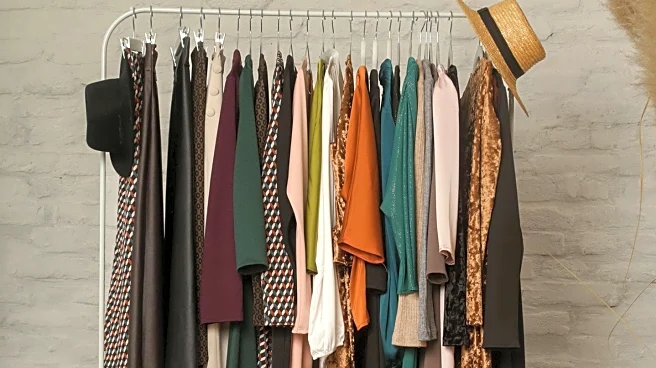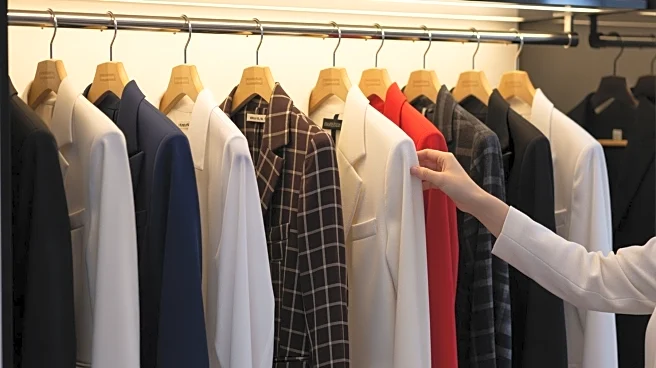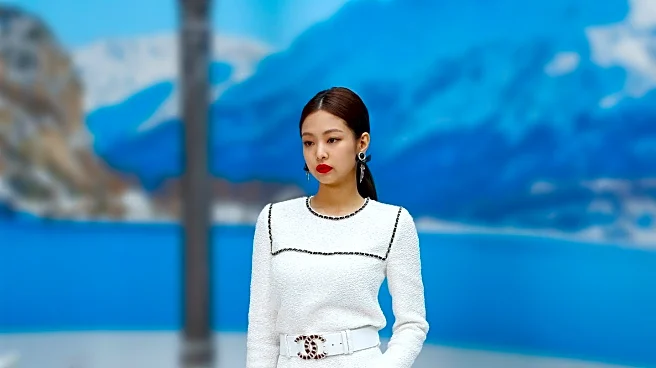What's Happening?
The fashion industry is increasingly moving away from traditional seasonal collections in favor of seasonless fashion. This shift is driven by the need for more sustainable practices and the demand for versatile
clothing that can be worn year-round. Major fashion houses like Saint Laurent, Michael Kors, and Gucci have adopted this approach, reducing the number of fashion shows they participate in and focusing on high-quality, timeless designs. Seasonless fashion emphasizes durable fabrics and classic styles that transcend seasonal boundaries, offering consumers more thoughtful shopping options and reducing impulse purchases. This change is partly a response to the global pandemic, which forced brands to reconsider their production methods and address environmental concerns.
Why It's Important?
The move towards seasonless fashion has significant implications for the fashion industry, particularly in terms of sustainability and consumer behavior. By reducing the need for frequent wardrobe changes and minimizing waste, brands can lower their environmental impact and align production with actual consumer demand. This approach also smooths factory operations, providing steady work for garment industry workers throughout the year. For consumers, seasonless fashion encourages mindful consumption, allowing them to invest in versatile pieces that last beyond fleeting trends. As brands adopt more sustainable practices, they not only benefit from streamlined production but also foster a culture of thoughtful, long-lasting fashion choices.
What's Next?
As the fashion industry continues to embrace seasonless collections, brands are likely to further innovate in sustainable production methods, such as on-demand manufacturing and AI-driven trend forecasting. These advancements will help reduce waste and allow for more personalized collections that meet consumer needs. Additionally, the shift towards seasonless fashion may inspire other industries to adopt similar practices, promoting sustainability and adaptability across various sectors. As consumers become more aware of the environmental impact of their choices, brands that prioritize sustainability and versatility will likely gain a competitive edge in the market.
Beyond the Headlines
Seasonless fashion not only addresses environmental concerns but also frees designers from the constraints of fast-changing trends and seasonal cycles. This allows for greater creativity and innovation, as designers can focus on crafting high-quality pieces that transcend seasons. By removing the pressure of releasing collections on a strict timeline, designers have the space to experiment with styles, materials, and sustainable production methods. This shift encourages personal expression and collaboration across industries, ultimately shaping a more sustainable and creative future for fashion.











